No matter where you go, there’s always something new to see in China’s dynamic capital; from ancient temples to bustling primary roads filled with restaurants and skyscrapers, Beijing is a tourist magnet. The city features many stunning cultural sites covering everything from architectural history to the profound intricacies of China’s rich ancient past and present contemporary innovations, making it stand out globally. In this piece, we’ll explore the fascinating caves and landmarks, including the Great Wall and Forbidden City, to less-known amazing spots within the traditional hutongs. Since Beijing is unique to everyone, one thing is sure: every traveler can expect something spectacular from this city and its inhabitants.
What Are the Must-Visit Attractions in Beijing?
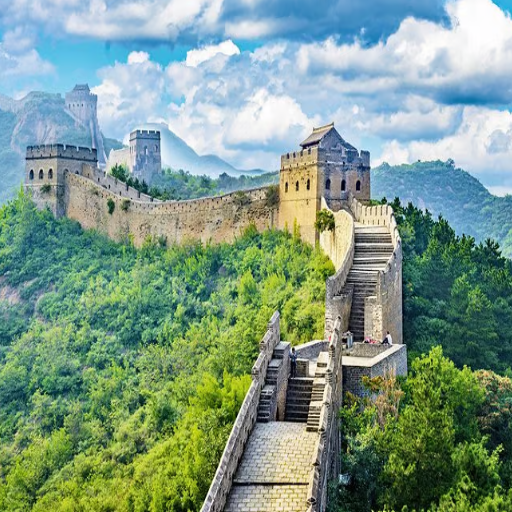
Why is The Forbidden City a Main Attraction?
Due to its unrivaled historical importance, impressive architecture, and cultural depth, the Forbidden City is one of Beijing’s top places of interest. It was built between 1406 and 1420 during the Ming Dynasty and was used as the imperial palace by twenty-four emperors of the Ming and Qing Dynasties. Its over 600-year-old complex represents China’s history and was the hub of political and ritualistic activities for most of the country’s history, making it a compulsory visit for anyone intrigued about China’s imperial history.
The complex is around 180 acres and is an iconic example of traditional Chinese architecture; it has 980 existing structures and nearly 8700 rooms. They embody the stunning skill of ancient craftsmen with their intricate wooden carvings, golden roofs, and the symbolic usage of the design. For example, red represents happiness, good fortune, and joy, while the yellow tiles are only reserved for the emperor. Its layout follows feng shui design laws to create balance in every part of it, which adds to its cultural and architectural value.
Currently, the Forbidden City functions as the Palace Museum, where more than 1.8 million relics are displayed, such as imperial jewels, pottery, calligraphy, and paintings. Such an extensive collection helps tourists to appreciate China’s artistic and cultural achievements from the perspective of various dynasties. Furthermore, this site is recognized by UNESCO as a World Heritage because of its global significance. The visit to the Forbidden City gives tourists an insight into the splendor enjoyed by the ancient Chinese royalty and the enduring legacy of one of the greatest civilizations in the world.
What about the Great Wall Of China? Does it make it a Triple-A attraction?
You should visit the Great Wall of China because of its architectural beauty, history, and cultural meanings. This 13,171-mile (21,196-kilometer) long structure is a marvel of ancient engineering since it went through mountains, plateaus, and deserts. The wall is estimated to have been built for many years during the Qin, Han, and Ming dynasties for military purposes to defend the northern borders against nomadic invasions. The Great Wall of China demonstrates impressive watchtowers, fortresses, and elegant scale, displaying the strength and cleverness of old China.
Incorporating processes such as tamped earth and brick molding, the Great Wall is constructed from many materials, some even dating back to eras long ago. The Wall’s sections, including Badaling, Mutianyu, and Jinshanling, differ in the region and the views they offer tourist visitors. For example, Badaling boasts splendid views of the structure and is easily accessible due to heavy restorations. At the same time, Jinshanling is more rugged and is ideal for hikers looking for a challenge, offering mixed sections of parade and wild wall. The varied portions and sections allow travelers on the Great Wall to explore its beautified restorations and untouched nature.
The Great Wall is a construction phenomenon, as on top of its physical beauty, it represents China’s culture and dedication. Being a part of UNESCO’s heritage sites, the Great Wall draws millions of tourists yearly with its vastness and the rich information it offers on China’s history. Visiting the Great Wall of China does not only present one with extraordinary sights. Instead, it allows for a deeper understanding and appreciation of the flourishing civilization. It is a must-visit location for those who appreciate history, adventure, and culture all in one.
Are you wondering if it’s worth visiting the Summer Palace?
Yes, and Yes, the Summer Palace is undoubtedly worth visiting. It is known worldwide as a perfect example of Chinese landscape garden architecture, presenting incredible natural beauty and magnificent construction and buildings. It was first built in 1750 and remodeled later, covering over 700 acres of key features such as Longevity Hill, the glorious Seventeen Arch Bridge, and Kunming Lake. Of all the reasons the Summer Palace is a UNESCO World Heritage Site, its stunning beauty and cultural and historical value are the greatest.
Visitors can look at delicately painted pavilions, splendid halls, and windowed corridors matched perfectly to absorb the calm nature around. In a broader explanation, The Summer Palace is the paragon of how Chinese gardening approaches natural features like water, hills, and culture. The types of visitors this spectacle caters to is the most diverse: peace seekers, tourists eager to learn history and admire indescribable views, The Summer Palace is magical.
What Are the Historical Sites in Beijing?
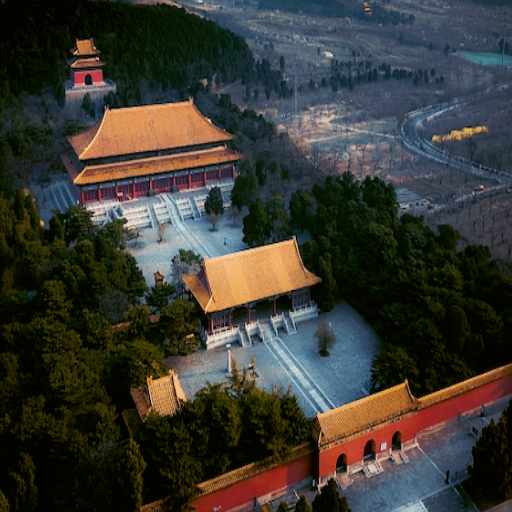
What Are You Going To Experience At Tiananmen Square?
Having a 109-acre area, Tiananmen Square is one of the most visited areas in China due to its political buildings and the monuments around it. One central public square that ranks among the largest globally is in Beijing, China. In which, you could discover creativity sculptured such as The Gate of Heavenly Peace which was the entrance to the imperial city, national museum of china that contains vast history artifacts, and the monument of The People’s Heroes which represents great leaders who fought for China’s freedom. There’s also The Great Hall of the People, which is housed for legislative and ceremonial activities.
Not only is the square deemed the pride of architecture, but it also holds historical importance as it became the center stage for significant events in modern Chinese history. During specific festivals or national holidays, citizens exercise their right to freedom of speech, a fantastic sight for tourists. It is full of the rich history of old China and the bustling modern times of new China, and the gate symbolizes the strength, unity, and warmth of the Chinese Nation.
Why Visit the Temple of Heaven?
The Temple of Heaven is an extraordinary example of ancient Chinese architecture and its history. Visit this remarkable site of Chinese culture and die architecture, which means a lot to people from China and around the world. The Temple of Heaven was built in the early 15th century during the Ming dynasty, making it around 600 years old. Emperors used the Temple for annual rituals to ensure good harvests. The structure of the Temple was created using principles of traditional Chinese cosmology, where the connection between heaven and earth is emphasized.
Monumental Engineering: The Hall of Prayer for Good Harvests is a brilliant example of ancient engineering. It is the only wooden structure built in China without a single nail, showcasing the precision craftsmanship of our ancestors.
Symmetrical Weather: The temple was built following strict order and symbolism, with circular designs on top again representing heaven and square bases symbolizing earth for an ancient Chinese Philosophical belief.
A Theater Effect: Sound travels, but at the Echo Wall, it does so magnificently. The Wall has unique acoustics, allowing sound to travel across its surface clearly.
Materiality: The combination of blue tiles representing heaven and intricate decorative motifs justifies its designation as a UNESCO World Heritage site.
Tourists always benefit whenever they visit here. The setting is tranquil, the architecture is brilliant, and the historical depth marvels everyone. You are sure to enjoy your time astonishingly.
What is the Significance of the Lama Temple?
The Lama Temple is a religious and cultural center of great importance. It is one of China’s most significant Tibetan Buddhist temples and captures the essence of both Han Chinese and Tibetan styles. The temple was built in 1694 during the Qing Dynasty and later used as a monastery for Tibetan Buddhist monks, which shows its importance in religion.
Architectural Features: The temple is over 66,000 square meters and has multiple pavilions and halls that form a central axis. It is constructed based on Chinese symmetry and Tibetan Buddhist distinctions, which makes it both beautiful and useful.
Historical Role: Originally a royal palace, the Lama Temple became a place of worship during Emperor Qianlong’s reign when he encouraged using Tibetan Buddhism in China.
Cultural Contributions: The temple is a work of art for worshippers and historians alike. With its tremendous works of carving intricacies, making sculptures, and various sacred pieces, the Temple is a masterwork, showing devotion to religion.
The combination of a place deeply attached to spiritual meanings and a cultural center makes the Lama Temple a profound art symbolizing multi-religious beliefs.
What Are the Best Neighborhoods to Explore in Beijing?
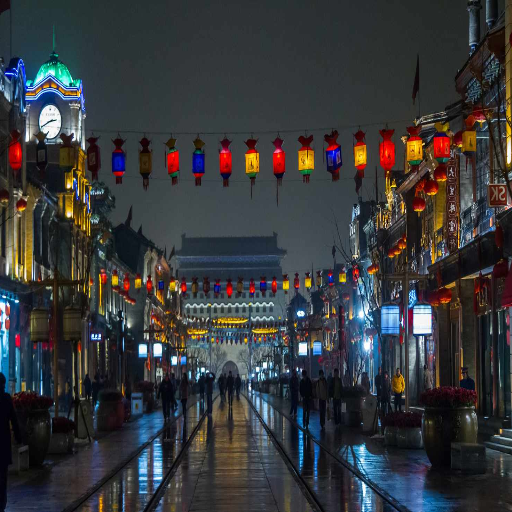
Reasons Why You Should Visit The Hutongs
Visiting The Hutongs will allow you to immerse yourself in China’s rich history, culture, and traditions. These narrow Hutongs alleyways with Rational Planning House are from the Yuan Dynasty era (1271-1368). Walking through these alleyways is a glimpse into the ancient metropolitan life, complete with courtyard houses known as siheyuan. They allow you to experience life in ancient Beijing free from the modern-day hustle and bustle. They are also named after famous families, temples, and trades, which amplify the story behind these Hutongs and the wonderful city of Beijing.
Alongside the cultural history, the imprinted architecture tells the story of the Chinese dedicated balance of feng shui and siheyuan houses. The noticeable Hutongs, Nanluoguxiang, and Yandaixie blend multi-disciplinary historical art with modern shops, galleries, and cafes. Walking through these neighborhoods that perfectly intertwine heritage and modernization is fundamental for those interested in art, religion, history, and culture.
Not only are Hutongs culturally and architecturally significant, but they also provide an unmatched chance to experience the daily life of local people. From munching on snacks famous in the streets of Beijing to engaging in calligraphy classes and seeing elders play mahjong, everything takes place within the vibrant, community-filled Hutongs. For those who want to appreciate the history of Beijing and its people, the Houghton’s remain an ever-changing, irreplaceable experience.
What is unique about Nanluoguxiang?
As one of Beijing’s most well-known Hutong neighborhoods, Nanluoguxiang is unique in its lively mixture of history, culture, and modernity. It is notably recognized for its traditional buildings, which make the area an ancient wonder fused with modern creativity. The rustic alley is approximately 800 meters long and features a Yuan-era symmetrical layout, which is a significant part of the city’s heritage. Old, narrow streets bordered with ancient grey brick buildings make the capital rich in architectural history.
Nanluoguxiang’s modern style, in addition to its ancient architecture, gives It its authentic special touch. This area has modern boutiques, cafés, craft shops, and historical sites like traditional courtyards and landmarks. Stores touting locally crafted jewelry, jianbing, Chinese crepe, and many more delicacies offer a unique atmosphere to taste and shop. With the mixture of modern style and traditional Chinese craftsmanship, the Hutong is one place every history lover and shopaholic would enjoy.
Moreover, Nanluoguxiang is also a cultural center for celebrating various arts and performances. Street performers, live music shows, and local galleries are typical in this area. The festivals and events throughout the year highlight how this region is not only a tourist attraction but a centerpiece of community interaction. The marvelous blend of historical importance, culture, creativity, and rich heritage makes Nanluoguxiang so unique, showcasing and preserving Beijing’s changing identity.
What Attractions Can Be Found in Wangfujing?
As an iconic shopping street in Beijing, Wangfujing is immensely popular with shoppers. It’s jam-packed with stores that offer modern retail opportunities and traditional Chinese culture. A shopper’s paradise, Wangfujing has many high-end international brands, luxury boutiques, world-renowned department stores, souvenirs, and bookstores that depict local craftsmanship, which can only be found in China. The shopping complex enables visitors to explore everything from fashionable clothing to traditional pieces, and Wangfujing continues to expand its offerings to meet growing shoppers’ needs.
The most precious attractions in Wangfujing are its restaurants. Food-related tourism has grown tremendously here, so Wangfujing restaurants are culinary temples. Wangfujing Snack Street is the most famous part of Wangfujing, bursting with colorful treats and meals. Here, everyone can find something for themselves: sugar-coated hawthorn, roasted chestnuts, and even the more daring scorpions on sticks. This mix of food is further made vibrant by the bold taste of Beijing cuisine. Snack Street not only tantalizes one’s taste buds but also enthralls all other senses by showering them with an experience full of colors, delectable smells, and mouth-watering sounds of food being prepared on the street.
Apart from its shopping and culinary options, visitors to Wangfujing can appreciate its culture, historical sites, and attractions. For example, The Wangfujing Cathedral or St. Joseph’s Church remains an essential landmark due to its unique architecture built in the 17th century. It adds a calming balance to the busy nature of the place. In addition, art lovers can go to contemporary galleries and exhibitions inspired by the changes in the culture of Beijing. The mix of historical landmarks, modern businesses, and local sights makes Wangfujing a truly unique destination for many tourists.
Where to Experience Traditional Cuisine in Beijing?
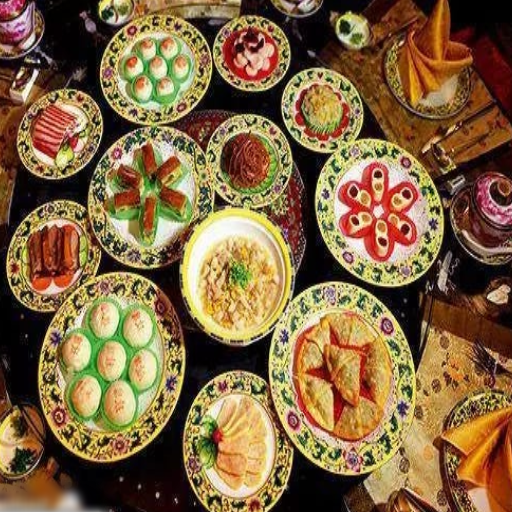
What Makes Peking Duck a Must-Try Dish?
Peking Duck deserves attention because it reflects Beijing’s culinary history. The dish is famous for the tenderness of the duck meat and its golden, crispy skin. Unlike other dishes, the preparation is complicated, as it requires drying the duck for a night before roasting it in an oven special for ducks so that it retains its texture and taste.
From a technical perspective, an exceptional Peking Duck can be rated by how crispy the skin is, how the meat smells when cooked due to the fruitwood used in traditional ovens, and how well the fat cooks. If the three combine perfectly, the dish becomes rich yet delicate, ensuring the consumer’s experience goes beyond imagination. The strength of culinary skills is exhibited when the duck is carved into 120 pieces and served to the customers in a pre-sliced manner.
What Are the Must-Try Restaurants in Beijing, China?
Based on my experiences, Da Dong Roast Duck Restaurant stands out because it serves one of the best Peking Ducks in town. The combination of modern roasting techniques and skill gives the duck skin a beautiful golden brown color while its meat remains succulent. Another notable restaurant is Quanjude, where traditional cooking with fruitwood ovens guarantees a real smokey and bold Peking Duck flavor. For hotpot lovers and those looking for midnight snacks, Ghost Street (Guijie) never disappoints.
When discussing technical parameters, the most critical issues are the raw materials, processes, and service standards. For instance, Da Dong uses much thinner ducks and precisely controlled over-cooking temperatures, allowing him to serve a dish that is not only delicious but also healthy. At Quanjude, skilled carving with fruitwood ovens guarantees an authentic dining experience. These establishments guarantee expertise in cooking as well as deep history and culture.
What Local Dishes Should You Try First?
While every dish has its importance, the most important and iconic one is the Peking Duck from Beijing. The striking aspect of this dish is the skin’s crispiness, which is coupled with tender meat. Its taste is unforgettable for a lifetime. The duck is bred carefully, and the overlying fat-to-meat ratio is sound. Also, the temperature in which it is roasted is perfectly controlled, making sure that flavor and texture blend beautifully.
Jiaozi, also known as dumplings, are my go-to. Rather than being filled with peas, they can also be stuffed with pork, shrimp, or vegetarian options. All of them are rolled with kneaded dough that is perfectly fluffy. Particularly important is the consistency of the dough, the way it is steamed or boiled, and the sauce it is served with.
For something a bit more edgy, Zhajiangmian is a savory noodle dish with rich soybean paste. What makes this dish special is the consistency of the sauce, together with the texture of hand-pulled noodles accompanied by finely chopped veggies. The way this meal can be enjoyed is comforting and incredible.
What are the best day trips to Beijing?
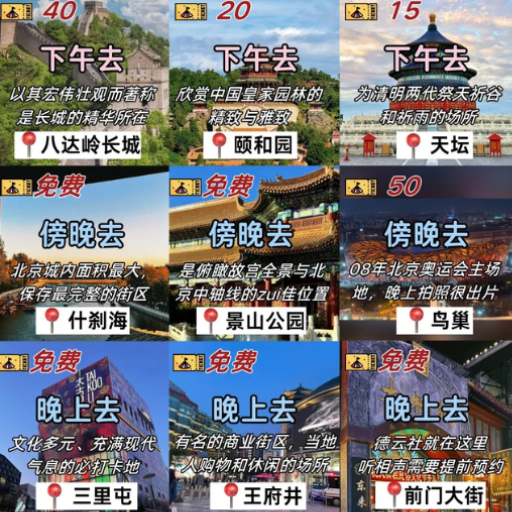
How to Visit the Mutianyu Section of the Great Wall?
The Mutianyu section of the Great Wall is straightforward to visit and has incredible views. I suggest arriving early to avoid crowds and get the most out of your visit. Traveling there is not difficult; you can hire a private vehicle or take public transport by combining a subway with a bus. When on-site, you can buy tickets that include optional activities like a chair lift, a cable car ride up, or a fun toboggan ride down.
From a more technical point of view, organizing your trip involves the following considerations:
Footwear and Comfort: You need to wear good walking shoes, as the wall has steep stairs and rough surfaces.
Weather: Always check the weather report and dress for the occasion. The conditions on the wall can differ from place to place and shift from season to season.
Entry timing: If possible, arriving early or midweek is recommended, as these days are quieter, allowing you to explore and enjoy the great views in peace.
Hydration and Supplies: Pack some water and light snacks. Active exploration coupled with poor supplies on the wall makes getting refueled challenging.
These pointers offer the best approach to making the most of this incredibly beautiful site and its surrounding areas. They also ensure that you are not lost when it comes to understanding the finer nuances of historical relevance.
What Other Attractions Are Possible To See In A Day Trip?
On a day trip, a traveler can visit many stunning places with the Great Wall, making the trip worthwhile. One of the more favorite spots is the Ming Tombs near Changping District, which is famous for its rich historical value. The distance here is not far, and the pathways are smooth, so it is possible to combine it with your Wall visit. However, proper time management is essential.
The Sacred Way is also possible; it is ornately lined with animal and official statues leading up to the tombs. This site is easy to get to, but a great deal of comfortable walking is required. For an even greater cultural encounter, a visit to the nearby traditional village can provide great local food and crafts. Planning for transportation is crucial because these additional shops need precise coordination with a guide or a private car.
Managing Your Time: Ensure you put aside enough time for various sites so you don’t feel rushed.
Clothing: Opt for the correct type of clothing that makes walking easier.
Transportation: Make transfers ahead of time to avoid delays between locations.
These changes will help you get the most out of a day trip by ensuring that your time is spent enjoying and appreciating the rich history and culture around you.
How Does a Day Trip from Beijing Work Logistically?
In my personal experience, a day trip from Beijing is only possible with sufficient prior planning and thoughtful division of priorities. First, settle on a destination as several would fit into the allotted time, such as the Great Wall, the Ming Tombs, or the Summer Palace. Whatever the choice, starting the day as early as possible is critical to make the most of the time available. For instance, the drive to the Great Wall at Mutianyu can take 1.5 to 2 hours, so be prepared for that.
Public transportation is also a factor that needs to be considered. Comfort ahead of time will help reduce the time and case by examining where tolls are located for subways and buses, as they change depending on the direction. Or, you could simply pay for a private car or guide to take care of everything. This method is better for seeing several locations since it saves time and allows more free time at the attractions. The technical parameters include ensuring your car rental or booking enables enough time for a round trip and provides toll fees.
Lastly, don’t forget about the entrance ticket reservations. If you plan on going to some popular locations, booking tickets online in advance will help save a long wait in the queues. Always beware of the peak season, ticket availability, and large crowds, which can greatly influence your experience. Wearing the right shoes, dressing for the weather, and having a well-thought-out plan really increases the chances of a smooth and enjoyable trip.
Frequently Asked Questions (FAQs)
Q: Which attractions in Beijing are a must for my itinerary?
A: Beijing’s best attractions are the Forbidden City, Badaling and Mutianyu Great Wall, Jingshan, and Beihai Park. These places represent the beauty of history and culture, making them ideal places to visit in China.
Q: What does hutong mean, and why should I visit one in Beijing?
A: A hutong is an old alley or street in Beijing enclosed by houses with inner courtyards. A hutong visit offers an opportunity to witness the ancient aesthetic of the city. You will see how the natives go about their daily lives, granting you the opportunity to experience the culture of Beijing.
Q: What are some valuable tips for traveling to Beijing for the first time?
A: Some practical tips for traveling to Beijing for the first time are to check at least basic conceptual phrases in Mandarin, check for when you go during peak tourist times, set up your travel route for the best use of public transport, and step carefully for the closing time of major attractions. In case you have free time, do not forget to try typical dishes and also explore less popular places.
Q: What’s the best way to appreciate Beijing’s history and culture as a tourist?
A: Visiting remarkable places like the Forbidden City, the Temple of Heaven, and the Summer Palace is advisable. If that’s not enough, explore the hutongs, where you will better understand Beijing’s past and traditional life.
Q: What are the essential landmarks in Beijing, China, that I should see first on my trip?
A: With the assistance of Lonely Planet, you can craft a more insightful trip to Beijing that includes astounding attractions, mouthwatering local foods, and enticing cultural elements. Forming a well-thought-out plan prior to landing will allow you to make the most of your visit.
Q: In addition to the Great Wall, Forbidden City, and Tiananmen Square, which other places should I visit?
A: If this is your first time in Beijing, there are so many amazing things you can do. The list can go on and on, but you can start by visiting the stunning Jingshan Park, which provides beautiful views. Be sure to always take strolls at Houhai’s sensational lakes and appreciate all the gifts Mother Nature has in store during nightfall.
Q: How Does The Hall of Prayer for Good Harvests Fit Within The Temple of Heaven?
A: The Hall of Prayer for Good Harvests is the key structure in the Temple of Heaven. It is where Ming and Qing dynasty emperors went to pray for good harvests. This magnificent structure symbolizes ancient Chinese architecture and should be included in your list of places to visit in Beijing.
Q: Why is visiting Beijing in a courtyard hotel a unique experience?
A: Staying in a courtyard hotel is uniquely different when experiencing Beijing due to the cultural charm of its traditional Chinese-style architecture. These hotels are relatively smaller than big chain hotels, allowing you to experience the essence of the local lifestyle and history.
Q: If you want to visit Beijing during good weather, what is the ideal time to travel there?
A: Traveling to China’s capital is best during the spring (April to June) and fall (September to October) seasons. During these periods, Beijing’s weather is warm and pleasing. It is also the best time to hike the Great Wall of China or visit any parks without too much heat or freezing cold.